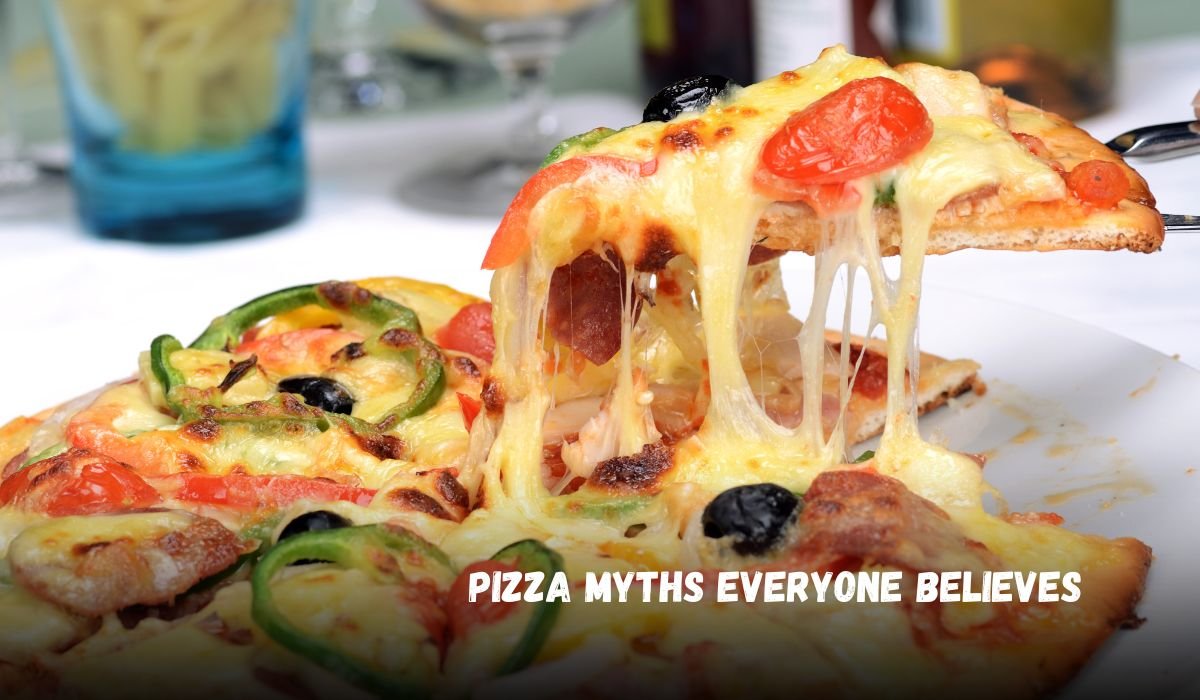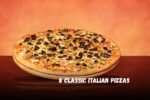Who doesn’t love a hot, cheesy slice of pizza? Whether it’s thin crust, deep dish, loaded with toppings, or just plain cheese, pizza is a global favorite. But along with all the love it gets, pizza has also collected a bunch of myths over the years. Some sound believable, others are just wild. Today, let’s break down some of the most common pizza myths that many people still believe. Ready to bust some myths? Let’s dive in.
Pizza is always unhealthy
This is one of the biggest pizza myths out there. Sure, if you’re piling on greasy meats and drowning it in cheese, it might not be the healthiest option. But pizza doesn’t have to be junk food. You can actually make a healthy pizza with whole wheat crust, fresh veggies, lean protein like grilled chicken, and a light sprinkle of cheese. It’s all about balance, not banning it from your diet.
Frozen pizza is just as good as fresh pizza
Let’s be real—frozen pizza can be a quick fix when you’re tired or just lazy (we’ve all been there). But does it really taste the same as a fresh pizza? Nope. Frozen pizzas are loaded with preservatives to make them last longer. The crust is usually cardboard-like, and the toppings don’t taste as fresh. Fresh pizza, especially from a local pizzeria, has that crispy, chewy crust and flavorful toppings that frozen just can’t compete with.
Pineapple doesn’t belong on pizza
Ah, the great pineapple debate. Some people love it, others say it’s a crime against pizza. But honestly, it all comes down to personal taste. If you like that sweet and savory combo, go for it! There’s no rule that says pineapple is banned from pizza. In fact, Hawaiian pizza has been around since the ’60s. So next time someone tells you it’s wrong, just remind them it’s all about what you enjoy.
The more toppings, the better
Sometimes, less is more. Loading up your pizza with every topping in sight might seem like a great idea, but it can actually ruin the taste. Too many toppings can make the crust soggy, and the flavors might clash. Plus, it can be really hard to eat! A few well-chosen toppings often make a much tastier pizza than a mountain of random ones.
All pizzas are Italian
Yes, pizza started in Italy, but the pizzas we eat around the world today have changed a lot. American pizza, for example, is totally different from the traditional Neapolitan pizza from Italy. In Japan, you might find squid and mayo on a pizza. In India, pizzas are often topped with spicy paneer or chicken tikka. Pizza has gone global, and each country adds its own twist.
Pizza should only be eaten hot
Cold pizza has a fan club of its own. Some people actually prefer it cold—right out of the fridge the next morning. And you know what? That’s totally okay. Pizza can still be tasty when it’s not steaming hot. The flavors settle, and it gives a different (yet still yummy) experience. So don’t feel guilty about munching on a cold slice for breakfast.
Crust is just a throwaway part
Ever seen someone eat everything but the crust and toss it aside? The crust is not just a handle for your slice! A good crust is full of flavor and texture. Some people even say the crust is their favorite part. Dip it in sauce, add some garlic butter, or just enjoy its baked goodness. Don’t let the crust go to waste!
You need fancy equipment to make good pizza at home
Sure, those big brick ovens look cool and make awesome pizzas, but you don’t need one to make a tasty pizza at home. All you need is a regular oven, a baking sheet or pizza stone, and some simple ingredients. With a little practice, your homemade pizza can rival your favorite pizzeria.
Conclusion
Pizza is more than just a food—it’s a worldwide love story. But along with that love, a bunch of silly myths have followed. The truth is, pizza is super flexible. It can be healthy, fun, weird, and delicious—all at the same time. So next time you hear one of these pizza myths, you’ll know better. And remember, there’s no “wrong” way to enjoy your favorite slice.
FAQs
Can I eat pizza and still be healthy?
Yes! Choose a whole grain crust, fresh veggies, and lighter cheese to make it a healthier meal.
Is cold pizza safe to eat?
If it’s been stored properly in the fridge, cold pizza is totally safe to eat.
Why does homemade pizza taste different from restaurant pizza?
Restaurants often use high-temperature ovens and special techniques, but homemade pizza can still be delicious with the right method.
Does real Italian pizza have a thick crust?
No, traditional Italian pizzas usually have a thin, soft crust, especially in places like Naples.
Is pizza bad for kids?
Not at all! Just like for adults, it’s about what kind of pizza and how often. Homemade or veggie-loaded pizzas can be great for kids.
















